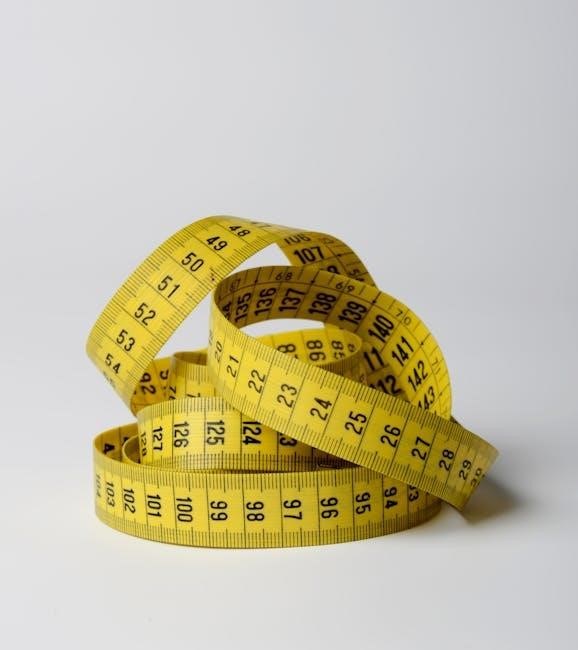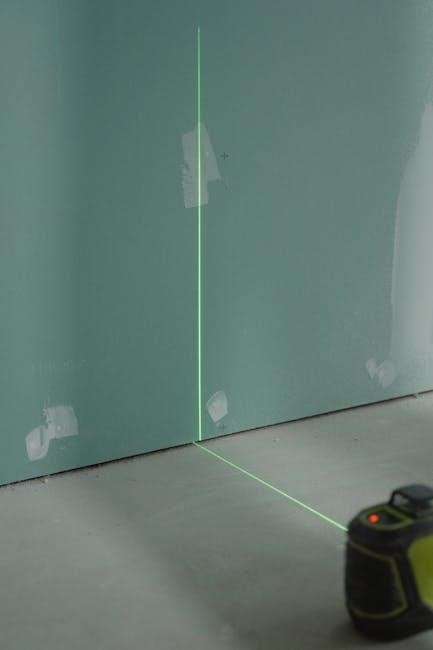The screw measurements guide provides a comprehensive overview of techniques, covering imperial and metric systems, to help understand screw types and sizes, using a screw chart for accurate measurements always.
Understanding Screw Types and Sizes
To effectively use a screw measurements guide, it is essential to understand the different types and sizes of screws available.
The various screw types include wood screws, sheet metal screws, and machine screws, each with its unique characteristics and applications.
Screw sizes are typically measured in terms of diameter and length, with the diameter being the most critical dimension.
A thorough understanding of screw types and sizes enables individuals to select the appropriate screw for their specific needs, ensuring a secure and reliable connection.
The screw measurements guide provides a detailed explanation of the different screw types and sizes, including their applications and uses.
By referring to the guide, individuals can gain a deeper understanding of the various screw types and sizes, making it easier to choose the right screw for their project.
Importance of Screw Measurements
Accurate screw measurements are crucial for ensuring safety and preventing damage to materials and equipment always using correct techniques and tools.
Common Applications and Uses of Screws
Screws are widely used in various applications, including construction, furniture making, and DIY projects, requiring different types of screws, such as wood screws, metal screws, and plastic screws;
The choice of screw depends on the material being used, with wood screws being used for wooden structures, and metal screws being used for metal frames.
In addition to these applications, screws are also used in electronics, automotive, and aerospace industries, where precision and accuracy are critical.
Understanding the different types of screws and their applications is essential for selecting the right screw for a particular project, ensuring a strong and durable hold.
Furthermore, screws are used in many everyday objects, such as appliances, toys, and machinery, making them an essential component in many industries.
Overall, screws play a vital role in many applications, and their proper use and selection are crucial for ensuring safety and preventing damage.

UTS Screw Chart Explanation
The UTS screw chart explains screw gauge, threads per inch, and thread standard, providing essential information for screw measurements and conversions, using tables and diagrams for clarity always.
Thread Standard and Pitch in Inches
The thread standard and pitch in inches are crucial components of the screw measurements guide, as they determine the compatibility and functionality of screws in various applications.
The thread standard refers to the shape and size of the threads, while the pitch in inches measures the distance between each thread.
Using a screw chart, individuals can easily identify the thread standard and pitch in inches for a specific screw type, ensuring accurate measurements and selections.
This information is particularly useful when working with screws in different units, such as converting from metric to imperial systems.
By understanding the thread standard and pitch in inches, users can confidently choose the right screws for their projects, avoiding potential errors and ensuring a secure and reliable connection.
The thread standard and pitch in inches are essential parameters in the screw measurements guide, providing a foundation for accurate screw selection and application.
This knowledge enables users to navigate the complexities of screw measurements with ease and precision, ultimately leading to successful project outcomes.

Screw Size Chart for Wood Screws
Wood screw size charts provide detailed measurements for various wood screw types, helping users select the right screws for their projects, using tables and diagrams for easy reference always.
Measuring Diameter and Length of Screws
To accurately measure the diameter and length of screws, a screw measurements guide is essential. The guide provides a step-by-step approach to measuring screws, including the use of a caliper or ruler to determine the diameter and length. The diameter is measured across the threads, while the length is measured from the tip of the screw to the head. It is crucial to use the correct units of measurement, such as inches or millimeters, to ensure accuracy. Additionally, the guide may include tables or charts to help users identify the correct screw size based on the measurements. By following the guide, users can ensure that they select the correct screws for their projects, which is critical for safety and structural integrity. The measurements are also important for ordering replacement screws or for manufacturing purposes. Using a screw measurements guide can simplify the process of measuring screws.

Ultimate Guide to US Screw Sizes
The guide covers various screw sizes, providing detailed information and charts for easy reference and accurate measurements always using standard units of measurement correctly.
Detailed Screw Size Chart and Measurements
A detailed screw size chart is essential for accurate measurements, providing a comprehensive list of screw sizes, including diameter, length, and thread count, to ensure the correct screw is used for a particular application.
The chart typically includes a range of screw sizes, from small to large, and provides information on the corresponding thread count and length.
This information is crucial for ensuring that the screw is properly secured and can withstand the required amount of stress and strain.
Using a detailed screw size chart can help to prevent errors and ensure that the correct screw is used, saving time and reducing the risk of damage or injury.
The chart can be used in a variety of applications, including construction, manufacturing, and DIY projects, and is an essential tool for anyone working with screws.
It is important to note that screw sizes can vary between different countries and regions, so it is essential to use a chart that is relevant to the specific application and location.
By using a detailed screw size chart, individuals can ensure that they are using the correct screw for their needs, and can complete their projects with confidence and accuracy.
The chart is a valuable resource for anyone working with screws, and can help to ensure that projects are completed safely and efficiently.

Understanding Numbers on Screws
The numbers on screws indicate diameter and thread count, using a screw size chart for reference, to determine the correct screw size and type, for a specific application always.
Using Screw Size Chart for Bolts and Other Fasteners
A screw size chart can be used for bolts and other fasteners, as they follow similar sizing standards, making it a versatile tool for determining the correct size and type of fastener needed for a specific application.
The chart provides a comprehensive overview of different fastener sizes, including diameter, thread count, and length, allowing users to easily compare and select the appropriate fastener.
Additionally, the chart can be used to convert between different measurement systems, such as imperial and metric, ensuring accurate and consistent measurements.
By using a screw size chart for bolts and other fasteners, users can save time and reduce errors, ensuring that their projects are completed efficiently and effectively.
Overall, a screw size chart is a valuable resource for anyone working with fasteners, providing a quick and easy way to determine the correct size and type of fastener needed for a specific application.



